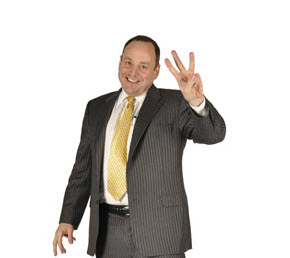 Dr. Joel Berg is one of the nation’s leaders in dental education and research. As president of the American Academy of Pediatric Dentistry (AAPD), Berg has a global vision for improving dental health that is inspiring action worldwide. He was named dean of the University of Washington School of Dentistry in 2012.
Dr. Joel Berg is one of the nation’s leaders in dental education and research. As president of the American Academy of Pediatric Dentistry (AAPD), Berg has a global vision for improving dental health that is inspiring action worldwide. He was named dean of the University of Washington School of Dentistry in 2012.
What are the most significant issues today in pediatric dentistry?
The increase in cavities in preschoolers is astounding, while the advances in materials and technologies for preventing and treating caries are our future. Innovations loom large with the promise of childhoods free of tooth decay. This is a preventable disease.
Early childhood caries (ECC) is considered an epidemic. Many dentists report that they are seeing high levels of decay across all income levels. Many children with extensive caries [tooth decay] require hospital admittance and general anesthesia for treatment.
Children are not healthy if their mouths aren’t healthy. Left untreated, dental disease can be intensely painful and costly, and can lead to serious, lifelong health complications
I believe in transitioning to management of the disease before it devastates the mouth — and potentially beyond. With so much more being discovered each day connecting the health of the mouth to the health of the body, early intervention becomes ever more important.
What kinds of technological solutions are on the way in this field?
Think about how you are told that your child has a cavity today. You sit and wait for the verdict, and then it’s drill and fill time. What if you could scan the teeth below the surface with a fluorescent light, before the surface breaks down and a hole forms? Technological advances can offer an inexpensive device that could be used in the dentist’s or pediatrician’s office to quickly identify kids at risk.
Imagine the nurse who does the intake discussion at your pediatrician’s office. She could screen your infant’s teeth as easily as taking his temperature or checking his ears. It’s about having the technology, training and better collaboration between pediatrics and dentistry. It’s in the works.
Why did you choose academic pediatric dentistry?
I always wanted to go into academic dentistry and teaching. Pediatric dentistry is a specialty that cares for a population — children — and not just a certain condition or treatment type. Pediatrics is about a population that you can greatly influence. I always had a strong affinity for working with kids — ever since I loved being a camp counselor in the Midwest.
Working directly with children gives you this wonderful opportunity to shape day-to-day behaviors that impact their life. In academics, I get to teach the most caring, intelligent young people entering this field, who will, in turn, impact millions of kids.
How can parents help their kids improve dental hygiene?
You have three key things to really remember as a parent regarding dental health: diet, hygiene and fluoride.
Diet: Diet is not about how much sugar is eaten, but how frequently. When a baby sips a bottle on and off all day, the bacteria in his mouth becomes an acid, and teeth can re-mineralize and become like rubber. Diet, in this context, means parents understand the need to reduce the number of episodes of sugar their child consumes during the day. Don’t give them gobs of crackers in the car all day as the snack. If you consolidate eating to mealtimes, you greatly reduce the number of exposures to sugar. It is the best thing you can do.
Hygiene: Babies are not born with this innate ability and should not be responsible for brushing correctly until they are 7 or 8 years old. They don’t have the dexterity. Parents have to teach this. Brushing the right way is essential, and it’s about position and movement.
Fluoride: You need to make sure fluoride intake is adequate. If you live in a major city, you can call the water department and ask. You can have your water tested, and your dentist can arrange this. If the level is low, get it supplemented.
How did you end up in Germany before coming to Seattle?
I was consulting for a German dental company that was family owned. There were about 1,000 employees inventing professional products. I have always been fascinated with business and wanted to learn. I ended up being the only American, and headed up the scientific research of the company.
Were you fluent in German?
No, but understanding Yiddish helped. My parents’ frequent use of Yiddish was their way of keeping my siblings and me from understanding their private conversations. It was great training.
How was living in Germany?
It was a really wonderful experience. I like the culture and work ethic of the Germans, and lived there full-time for three years. I would go back and forth to the United States and around the world, meeting leaders in dental communities. It could be a research scientist one day, or deans of top universities the next, or experienced practitioners in the field. I still have many of these contacts today.
What led you back to the U.S.?
In 2000, I moved to Seattle to work with 30 Ph.D.s and, oddly enough, no dentists! My work was to develop consumer products for the field. I worked with pharmacologists, physicists, technology, designers, and it was inspiring to bring these teams together.
You make dentistry sound as exciting as the Internet revolution. What is most meaningful to you today?
Understanding the science of changing kids’ health and development by changing their behaviors can be revolutionary. Think about how a product like the iPad in developing countries impacts children’s access to better educational resources. The improved consumer dental products in a child’s hand, used correctly, have enormous impact on a child’s health.
Is there a big difference in dental health, depending upon one’s demographic profile?
Yes. Income and access to care are key factors in all health. My work with Healthy Smiles, Healthy Children: The Foundation of the American Academy of Pediatric Dentistry is what led up to my current position at the AAPD. Healthy Smiles supports and promotes education, research, service and policy development that advance the oral health of infants and children through adolescence, including those with special health care needs.
What is the big initiative for you as UW dean or president of the AAPD?
We need global action to eliminate early childhood cavities. Efforts by family physicians globally who screen for 40 diseases should screen for early cavities. The crisis is growing, and we need partnerships worldwide.
In the United States, there is one dentist per 1,900 people. In China, there is one per 50,000. The average child in China will not see a dentist until her face is swollen and needs emergency care. The westernization of diets, with more processed food and sugar, will increase this problem. The UW has many initiatives, as does the AAPD, to educate doctors and increase their ability to provide basic dental examinations.
How do you feel about thumb sucking and pacifiers?
Thumb sucking is more detrimental than pacifiers. The goal is no fingers. If kids are getting to be 4 and 5 and sucking digits in the daytime, you need to try positively reinforcing them when they are not sucking. They want your attention, so make it positive. It usually works.
Pacifiers generally don’t cause orthodontic problems unless used excessively. Ask your dentist for product advice.
Are dental X-rays overused? How safe are they?
X-rays are very safe when used according to guidelines and offer tremendous benefit in detection of disease. The amount of radiation even from 10 years ago is infinitely less. Dentists should differentiate based on the patient and their history.
What are the worst — most sugary — foods for kids’ teeth?
Sour Patch Kids. I love them, and they are the perfect cavity-causing treat. Candy that sticks to your teeth and has tons of sugar and combines a lot of acid — such as my favorite lemon-lime Sour Patch Kids, are the worst.
Chocolate, on the other hand, like pure semisweet cocoa, has anti-cavity properties. Not bad! It melts in your mouth and does not stick to your teeth.
How do you feel about fluoride?
There is a lot of misinformation. Seventy percent of the country gets it, and no one has identified a single health issue. It is one of the most effective and cost-effective public health measures.










